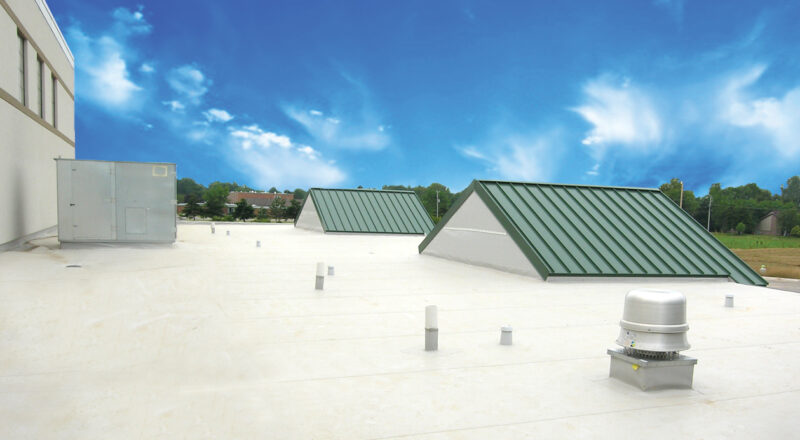In the lifecycle of a commercial building, roof replacement is a significant investment and undertaking. Whether prompted by aging, damage, or the desire for improved energy efficiency, it’s a decision that requires careful consideration and meticulous planning. In this article, we’ll delve into the essential factors to consider and provide valuable tips to guide you through the process of your commercial roof replacement.
Assessment and Evaluation:
Before embarking on a roof replacement project, conducting a thorough assessment of the existing roof is crucial. Engage qualified professionals to inspect the roof’s condition, identify any structural issues, assess the extent of damage, and determine the appropriate course of action. Understanding the current state of the roof will guide decision-making and help in developing an accurate budget and timeline for the replacement project.
Material Selection:
Selecting the right roofing material is paramount to the success and longevity of the replacement project. Consider factors such as durability, weather resistance, energy efficiency, and maintenance requirements when evaluating different options. Common commercial roofing materials include asphalt shingles, metal roofing, EPDM, TPO, and PVC membranes. Each material has its advantages and suitability depending on factors like climate, building design, and budget constraints.
Regulatory Compliance:
Ensure compliance with local building codes, regulations, and zoning requirements when planning a roof replacement project. Obtain necessary permits and approvals from relevant authorities to avoid legal complications and ensure the safety and structural integrity of the building. Engage with professional roofing contractors who are well-versed in local regulations and can navigate the permitting process smoothly.
Budgeting and Financing:
Roof replacement is a significant financial investment, and it’s essential to establish a realistic budget early in the planning stages. Factor in costs such as materials, labor, equipment rental, permits, disposal of old roofing materials, and potential unforeseen expenses. Explore financing options and consider long-term cost savings associated with energy-efficient roofing materials, which may justify higher upfront costs.
Safety Measures:
Safety should always be a top priority during roof replacement projects. Implement comprehensive safety protocols and provide adequate training for workers to prevent accidents and injuries. Adhere to Occupational Safety and Health Administration (OSHA) guidelines and regulations to maintain a safe working environment for everyone involved in the project.
Maintenance and Long-Term Care:
After the roof replacement is complete, establish a regular maintenance schedule to prolong the life of the new roof and prevent costly repairs down the line. Inspect the roof periodically for signs of damage, leaks, or other issues, and address them promptly. Proper maintenance not only preserves the structural integrity of the roof but also protects the building and its occupants from potential hazards.
In conclusion, roof replacement for commercial buildings demands thorough planning. Moreover, it necessitates careful consideration of various factors and strict adherence to industry best practices and regulations. Initially, by assessing the roof’s condition and subsequently selecting the appropriate materials, you lay a solid foundation for success. Furthermore, ensuring regulatory compliance and budgeting effectively are critical steps. Additionally, efficiently managing the project and prioritizing safety throughout the process are essential. Finally, by implementing a proactive maintenance strategy, you can successfully navigate the roof replacement process. This approach not only safeguards the long-term integrity of your commercial building but also enhances its performance significantly.”
